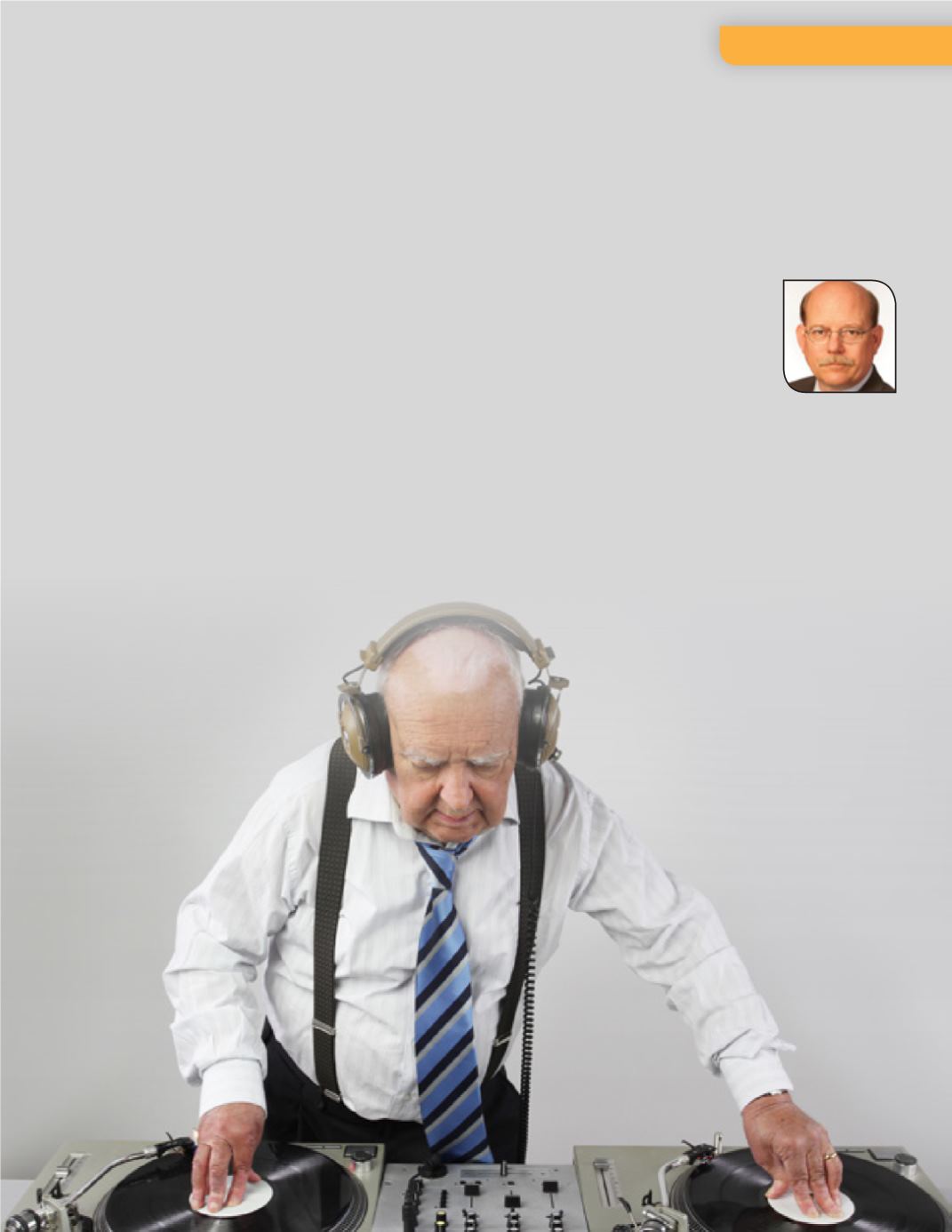

I
ntuitively, we know it, but much research has confirmed that
music can make an employee more creative or more produc-
tive, can relax a patron, can make restaurant tables turn
over faster or diners spend more, or can make a repetitive task
more tolerable. Your business clients know this, too, and often
play music in their offices, in their retail and public spaces, at
trade shows and company events, and in online ads or on the
phone. What they may not know is that their use of music
is generally subject to a complicated legal and busi-
ness structure that has evolved over more than
two centuries. Here is where, with some basic
background, you can help.
The primary form of intellectual prop-
erty protection for music is copyright. In
the case of a musical work, there are often
two, separately protected embodi-
ments: 1) the musical composition
(the arrangement of notes and
rhythms together with any
associated lyrics) and 2)
the sound recording of
a performance of that
musical compo-
sition. Each of
these works is
the product
of separate
aut hor sh ip,
usually with separate owners. Typically, the copyrights in a
musical composition end up owned by the music publisher
(sometimes in shares with the composer/lyricist); the copyrights
in the sound recording typically end up owned by the recording
company.
If your client is going to perform its own rendition of a
musical work, it must clear rights from the publisher. If your
client proposes instead to use, incorporate, or digitally distribute
an existing recording of that musical work, it must clear
the necessary rights from both the publisher and the
recording company. If your client proposes to use
music in an advertising or marketing context, it may
also need to clear publicity rights from any artists
closely associated with the composition or the
recording.
Among the bundle of rights that comprise the
copyrights in a piece of music is the public perfor-
mance right – i.e., public performance of a
musical work requires the permission of
the copyright owner. In the U.S., these
rights are administered by one of three
performance rights societies:
The
American Society of Composers,
Authors
and Publishers
(ASCAP),
Broadcast
Music Inc. (BMI), and
Society of European
Stage Authors and
By Steve Gillen
What you Need to Know About
Your Clients’ use of Music
in Their Businesses
www.CincyBar.orgNovember 2017 CBA REPORT
l
9
Feature Article


















